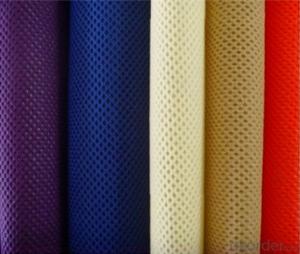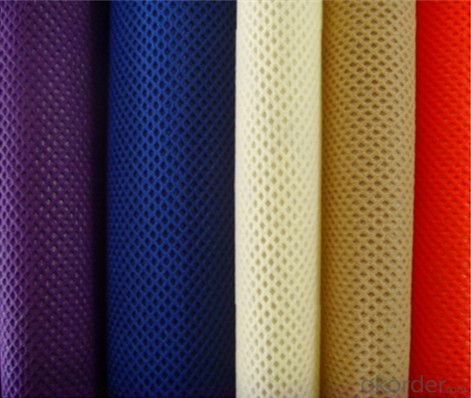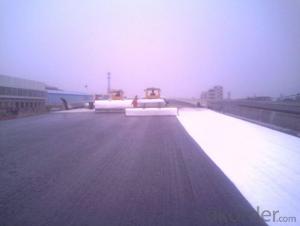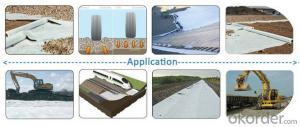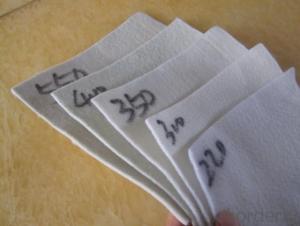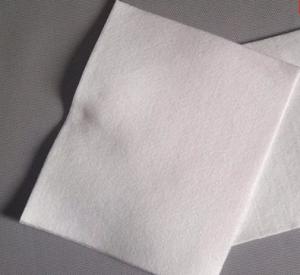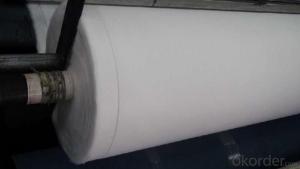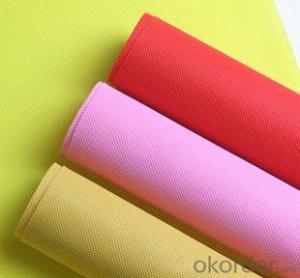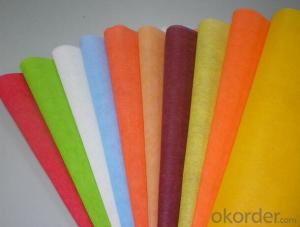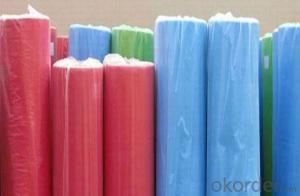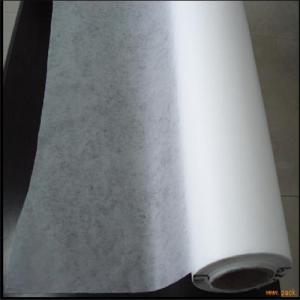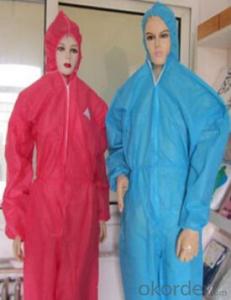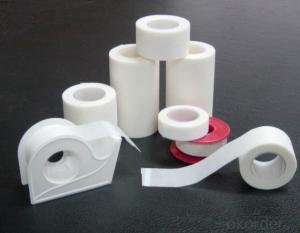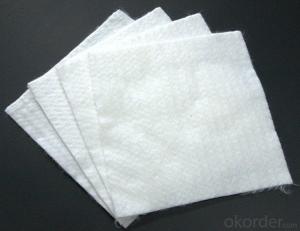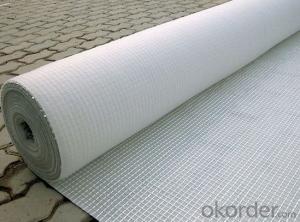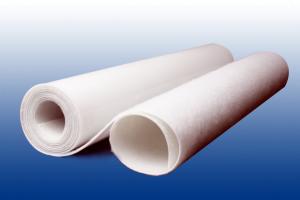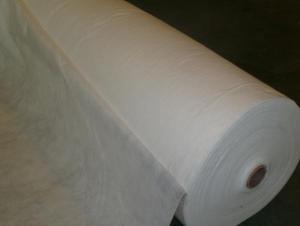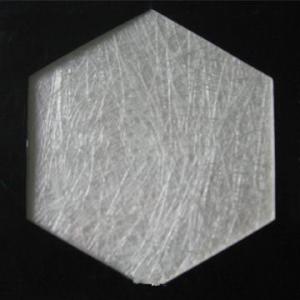Mndot Geotextile Fabric - Factory Supply Colorful PP Spunbonded Nonwoven Fabric
- Loading Port:
- China Main Port
- Payment Terms:
- TT OR LC
- Min Order Qty:
- -
- Supply Capability:
- -
OKorder Service Pledge
OKorder Financial Service
You Might Also Like
Material
100% Polypropylene/100% PP
Color:Any color can be available
GSM(gram per square meter)
9-180GSM
Roll Width 4-320cm
Roll Length According to your requirement
Technics Nonwoven Spunbonded
Feature Waterproof, Mothproof, Eco-friendly, Non-toxic, Breathable, Anti-Bacteria
Usage Agriculture, Indrustry, Construction, Packaging,, Home-textitle, etc
Details
1MOQ 1 Ton
2 Loading Capacity
20’ Contain: 4 Tons
40’ HQ: 10-11 Tons
3Delivery Time
Within 7-15 days after 30% deposit is received or L/C
4 Payment Terms
1) T/T: 30% T/T in advance and balance 70% before shipping B/L copy
2) L/C at sight
5 Loading of Port
Qingdao Port
Superiority
1Free Samples
2Factory Supply
3Competitive Price With High Quality
4More than 20 years experience
FAQ :
1.What is your main products ?
Our main products are made from PE ,PP etc and could be used for agriculture and construction ,etc .
2.What is your payment term ?
We could accept TT ,LC.
3.What is your delivery time ?
The delivery time is around 30days per container, sometimes we have stocks .
pp spunbonded nonwoven fabric
- Q: How do geotextiles help in preventing soil erosion in vineyards?
- Geotextiles help in preventing soil erosion in vineyards by acting as a protective barrier. They are placed on the soil surface between the rows of vines, effectively reducing the impact of heavy rainfall, wind, and water runoff. The geotextiles allow water to pass through while retaining the soil particles, preventing them from being washed away. This helps in maintaining the stability of the soil, reducing erosion and preserving the nutrient-rich topsoil crucial for vine growth and productivity.
- Q: Are geotextiles suitable for use in waste containment systems?
- Yes, geotextiles are suitable for use in waste containment systems. They provide effective filtration, separation, and reinforcement properties, helping to prevent the migration of fine particles and contaminants into the surrounding environment. Geotextiles also enhance the stability and durability of waste containment systems, making them an ideal choice for various waste management applications.
- Q: How do geotextiles contribute to soil remediation?
- Geotextiles contribute to soil remediation by acting as a barrier or filter to control erosion, retain sediment, and stabilize the soil. They help to prevent the spread of contaminants, regulate water flow, and enhance the effectiveness of other remediation techniques such as soil vapor extraction or bioremediation.
- Q: Can geotextiles be used for livestock waste management?
- Yes, geotextiles can be used for livestock waste management. Geotextiles are permeable fabrics that can be used to control erosion, filter water, and separate different materials. In the case of livestock waste management, geotextiles can be employed to contain and filter waste runoff, prevent soil contamination, and improve overall water quality. By providing an effective barrier, geotextiles help in preventing the leaching of harmful substances into the environment, thus aiding in the proper management of livestock waste.
- Q: How are geotextiles used in railway construction?
- Geotextiles are used in railway construction for various purposes such as erosion control, drainage, and reinforcement. They are placed beneath the ballast to prevent soil erosion and stabilize the trackbed. Geotextiles also help in improving the overall drainage system, reducing the risk of water accumulation and subsequent damage to the railway infrastructure. Additionally, these materials provide reinforcement to the trackbed, enhancing its stability and longevity.
- Q: Geotextile price geotextile how much money a square meter
- Geotextile is a new type of building materials, raw materials are polyester, polypropylene, acrylic, nylon and other polymer polymer synthetic fiber. In accordance with the manufacturing method is divided into: there are two types of geotextile and non-woven geotextile. According to the use of anti-seepage, anti-filter, drainage, isolation, reinforcement, protection, sealing and so on a variety of functions, based on a variety of factors, the price is not the same, we would rather discuss with the price, Hongxiang new materials company Meng Xiangyu that sell products is not just look at profits, if only the simple pursuit of profit level, it is too easy, but if you want to assume the responsibility of the consumer, the quality of the project Responsibility, but need to spend a lot of effort. To this end, we do not count the cost, put a lot of manpower and resources to innovation, to transform, choose the best materials and the best modern equipment, put a lot of manpower, material resources to innovation, to create brand value, Can create the greatest green benefits. High-end quality and green is a commitment, we promise not to short-term interests, betray the future!
- Q: Geotextile laying should be beyond the edge of how to set the number of specific requirements? Which specification is more detailed
- Geotextile laying should be beyond the edge of how to set the number of specific requirements? You want to understand this situation, there is no clear norms, but can refer to the "garbage sanitary landfill seepage control system engineering technical specifications" (CJJ133-2007) 5.6.6 of the provisions of not less than 300mm is possible The Article 5.6.6 of CJJ133-2007 states that: ... the repair range shall be greater than 300mm around the breakage range.
- Q: What are the different manufacturing methods for geotextiles?
- There are several manufacturing methods for geotextiles, including needle punching, heat bonding, weaving, and knitting.
- Q: Thank you, great gods
- Polyester short wire, polyester filament, polypropylene geotextile, filament woven geotextile, and so on. I professional production geotextile geomembrane and other geotechnical materials, a professional construction of the welding team, wish smooth
- Q: What are the different geotextile puncture resistance test methods?
- There are several different geotextile puncture resistance test methods, including the ASTM D4833 puncture test, ASTM D6241 puncture test, and the ISO 12236 puncture test. These tests involve applying a force to a geotextile specimen using a puncture probe or cone, and measuring the force required to puncture the material. These methods help determine the puncture resistance and durability of geotextiles for various applications.
Send your message to us
Mndot Geotextile Fabric - Factory Supply Colorful PP Spunbonded Nonwoven Fabric
- Loading Port:
- China Main Port
- Payment Terms:
- TT OR LC
- Min Order Qty:
- -
- Supply Capability:
- -
OKorder Service Pledge
OKorder Financial Service
Similar products
Hot products
Hot Searches
Related keywords
